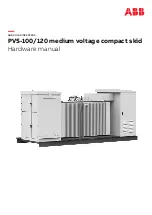
FORM NO.:
6U5M-A11M-N
B
-
EN
JOHNSON CONTROLS
20
Notes:
1. The distances between the walls and peripheral units should employ the same rules as shown in Clearance
in SECTION 5, if the units are surrounded by walls
2. Installation contractor must include vent and drain accommodations in chilled water piping near the evaporator.
3. Stop valves must be installed at the inlet of each unit to balance chilled liquid distribution.
4. A minimum interval of 700 mm must be reserved for field wiring, commissioning and maintenance.
5. Detailed dimensions refer to single unit drawings.
System Leaving Water Temperature Sensor
When the system is modular connection and the user
chooses leaving water temperature as control method,
there should be a leaving water temperature sensor
installed on the main water supply pipe. The leaving
water temperature sensor is connected with 1# unit. No
requirement for temperature sensor installation if
leaving water temperature control is not applied.
Installation methods of temperature sensor:
a) G1/2’ tee joint of internal thread is installed on the
main water supply pipe.
b) G1/2’ blind tube of external thread is installed on
the tee joint of internal thread.
c) Conduction oil is injected into the blind tube, then
the temperature sensor is inserted and sealed tightly
with thread locks.
The blind tube should be installed in horizontal
direction, perpendicular to the main pipe, in case of
freeze-up in the tube.
For accuracy of temperature sensing, the sensor should
be inserted at the bottom of the blind tube.
Buffer Water Tank
When water volume capacity for the water system is
little, sharp drop of water temperature would affect
defrosting when the unit is operating in heat mode for
defrosting. To avoid this, buffer water tank should be
applied or the diameter of main water pipe should be
enlarged to meet the recommended range in the
following table.
The referential installation methods for buffer water
tank as shown below.
Expansion Tank (Pot)
There is no expansion tank as standard components
built-in the unit.
When the site water system is set as
a closed cycle system, Expansion Tank must be
installed on the return pipe of the unit.
Expansion
tank should be applied when water volume capacity of
water system is higher than that in the following table.
Installing height of the expansion water tank should be
within 50 m above the unit. The design pressure of
expansion tank should be
6
bar at least.
Water Treatment
The declared cooling capacity of unit on nameplate or
other catalogs is based on the situation that fouling
factor is 0.018m
2
℃
/kW. Dirt, filth, oil or other
impurities all will have a negative effect on the heat
transfer efficiency and the unit performance. Foreign
matters in chilled water would increase water pressure
drop of the heat exchanger, reduce water flow and
cause mechanical damage for pipes of heat exchanger.
Strict measurement should be carried out for water
quality for the water system of unit, and water quality
should conform to requirements in the table of
chiller
water requirement
in TABLE 6.
PROJECT
UNIT
value
result
corrosion
scale
PH(25℃)
7.5-8.0
○
SO4--
ppm
<100
○
HCO3-/ SO4--
ppm
>1.0
○
Cl-
ppm
<50
○
PO4
ppm
<2.0
○
NH3
ppm
<0.5
○
Free Chlorine
ppm
<0.5
○
Fe+++
ppm
<0.5
○
Mn++
ppm
<0.05
○
CO2
ppm
<10
○
H2S
ppb
<50
○
Temperature
℃
<65
○
○
Oxygen
content
ppm
<0.1
○
Total
hardness
dH
4.8-8.5
○
TABLE 6-
Water quality standards
Cooke Industries - Phone: +64 9 579 2185 Email: [email protected] Web: www.cookeindustries.co.nz
Содержание YVAG012
Страница 53: ...Cooke Industries Phone 64 9 579 2185 Email sales cookeindustries co nz Web www cookeindustries co nz ...
Страница 54: ...Cooke Industries Phone 64 9 579 2185 Email sales cookeindustries co nz Web www cookeindustries co nz ...
Страница 55: ...Cooke Industries Phone 64 9 579 2185 Email sales cookeindustries co nz Web www cookeindustries co nz ...
















































